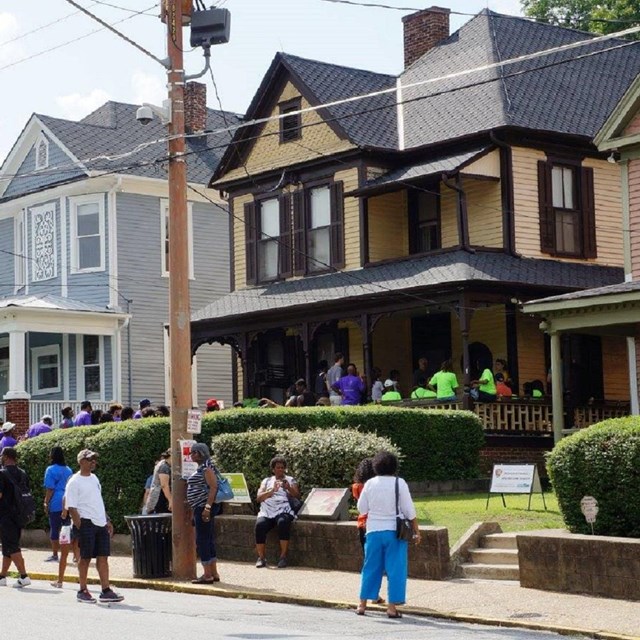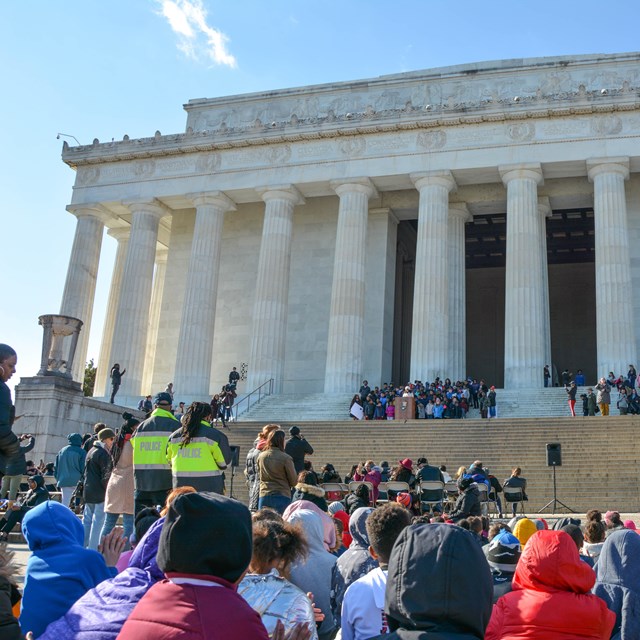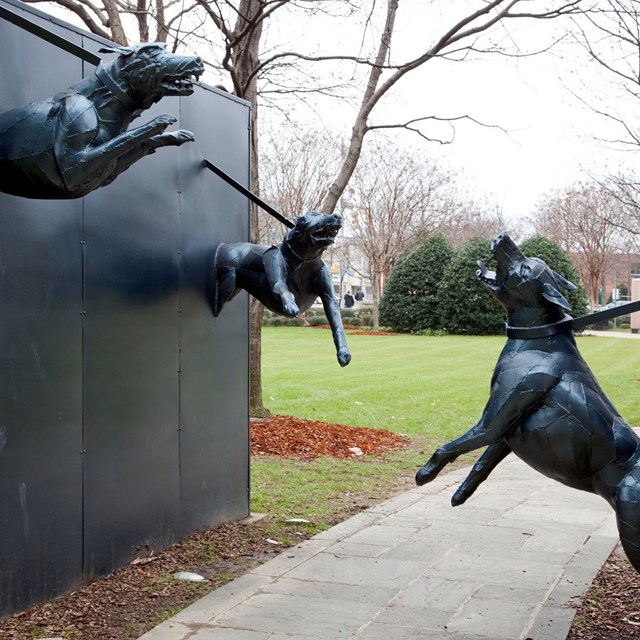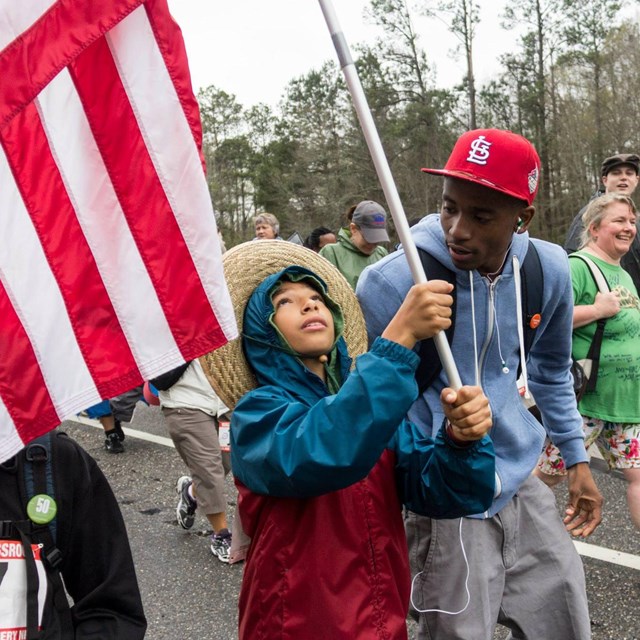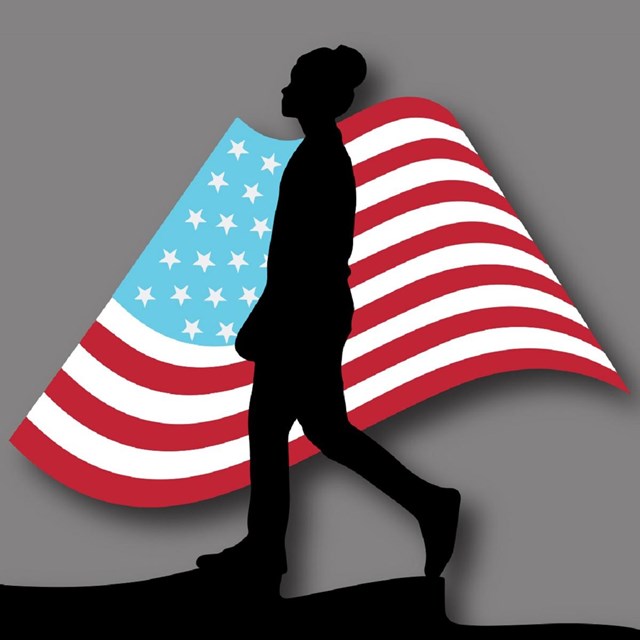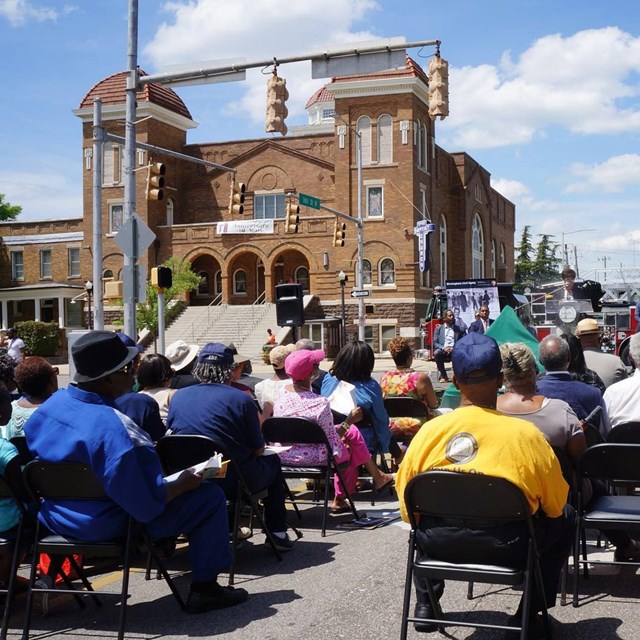Dr. Martin Luther King Jr.Born in Atlanta, Georgia on January 15, 1929, Martin Luther King Jr. grew up in an era of racial prejudices and legalized segregation that would influence his life's work. As a religious minister and activist, he rose to become a national leader in the Civil Rights Movement of the 1950s and 60s. Dr. King sought to maintain an "abiding faith in America and an audacious faith in the future of mankind." Although most widely known for his leading role in the African American civil rights movement, Dr. King was a tireless advocate for the nation's working class and the oppressed around the world. His life tragically ended when he was assassinated on April 4, 1968, but his legacy continues to inspire Americans today. 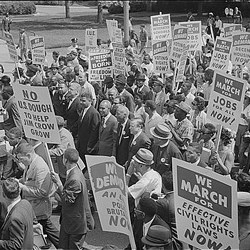
Library of Congress The Stride Towards FreedomA greater nation… A finer world.
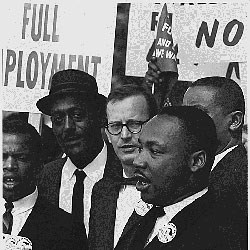
National Archives The Measure of a ManMichael (later Martin) Luther King, Jr. (January 15, 1929-April 4, 1968) was born in the segregated south of Atlanta, Georgia. After graduating Morehouse College (B.A. Sociology), Crozer Theological Seminary (B. Divinity) and Boston University (D. Systematic Theology, 1955) he entered the Christian ministry. He married the perfect partner, Coretta Scott, in 1953 and took a pastorate in Montgomery, Alabama, in 1954, where he joined the leadership of the local chapter of the National Association for the Advancement of Colored People (NAACP), the Montgomery Improvement Association, and served in the creation of the Southern Christian Leadership Conference. He was architect of the non-violent strategy for a "Negro" bus boycott protesting the city's arrest of Rosa Parks for sitting in a seat reserved for "Whites." He asked his people, "Are you able to accept blows without retaliating…to endure the ordeals of jail?" The answer was yes. The "Montgomery Movement" led to the integration of the city's buses and lit a contagious interracial fight for rights that spread to Washington, DC, and across the world. Dr. King received the Nobel Peace Prize in 1964, but he didn't rest on his laurels. 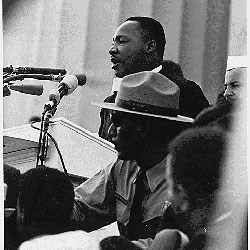
National Archives The Civil Rights MovementThe Civil Rights Movement of the 1950s and 60s followed southern-state defiance of the Supreme Court's Brown v. Board of Education decision (1954) ruling that segregation was unconstitutional. Dr. King dove in and supported it without reserve: He assumed leading roles in Montgomery (1955); the Crusade for Voting Rights (his first speech at Lincoln Memorial, 1957); the Atlanta restaurant sit-in (1960); the intercity Freedom Riders and Albany (Georgia) Movement (1961); Birmingham Campaign (1963); the Children's Crusade for "freedom now" so their parents could see freedom before they died (1963); the March on Washington for Jobs and Freedom, from which his "I Have a Dream" still resounds (1963); St. Augustine, Florida, and Mississippi (1964); the Voting Rights March from Selma to Montgomery (1965); the Chicago drive against slums and poverty (1965); the "Meredith Mississippi March against Fear" (1966); and more. Frivolous arrests repeatedly landed him in jail and attracted Federal-authority attention to injustices to African Americans. Montgomery led to the Civil Rights Act of 1957 and 1960; Birmingham, to the Civil Rights Act of 1964, which Dr. King was present to see President Johnson sign; Selma, to the Voting Rights Act of 1965. In 1967, expanding his message of peace, Dr. King spoke out against the Vietnam conflict (1959-1975), then at its height in casualties. 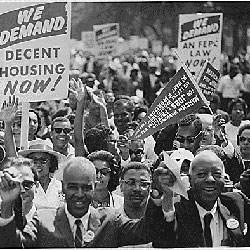
National Archives The MessageAn inescapable network of mutuality. In Dr. King's Footsteps
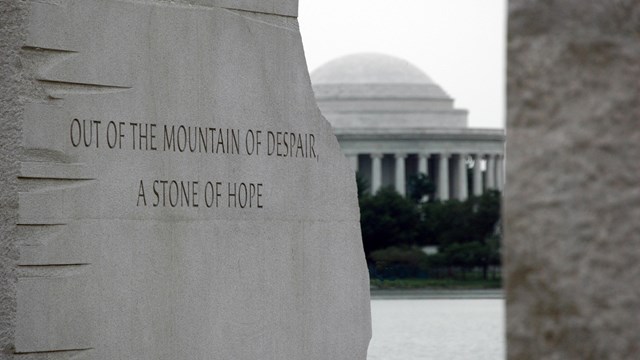
History & Culture
Learn more about Dr. Martin Luther King Jr., the Civil Rights Movement, and the memorial. 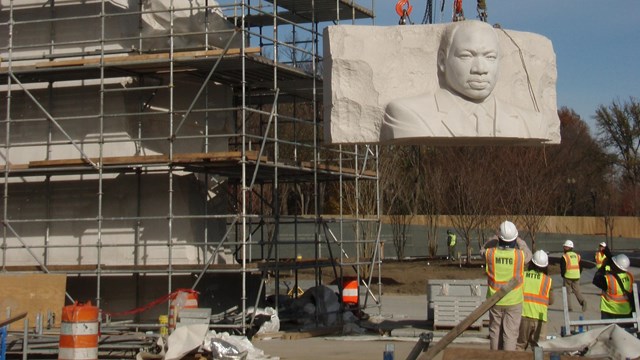
Building the Memorial
Discover how the memorial took shape and its place among the iconic monuments in the heart of the nation's capital. Plan Your Visit
Find basic information and tips about visiting the memorial, including directions, hours, and ranger programs. |
Last updated: March 29, 2021

